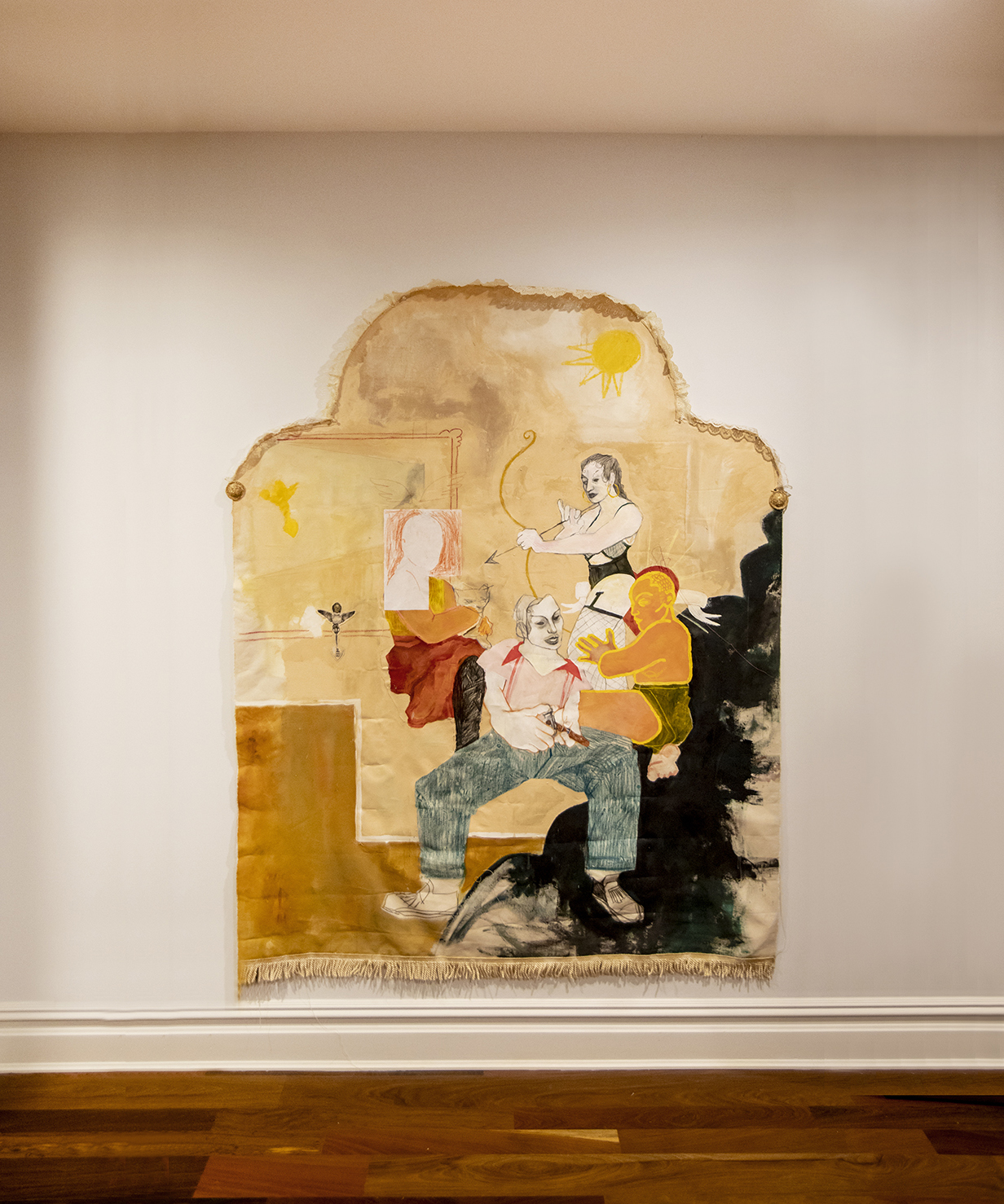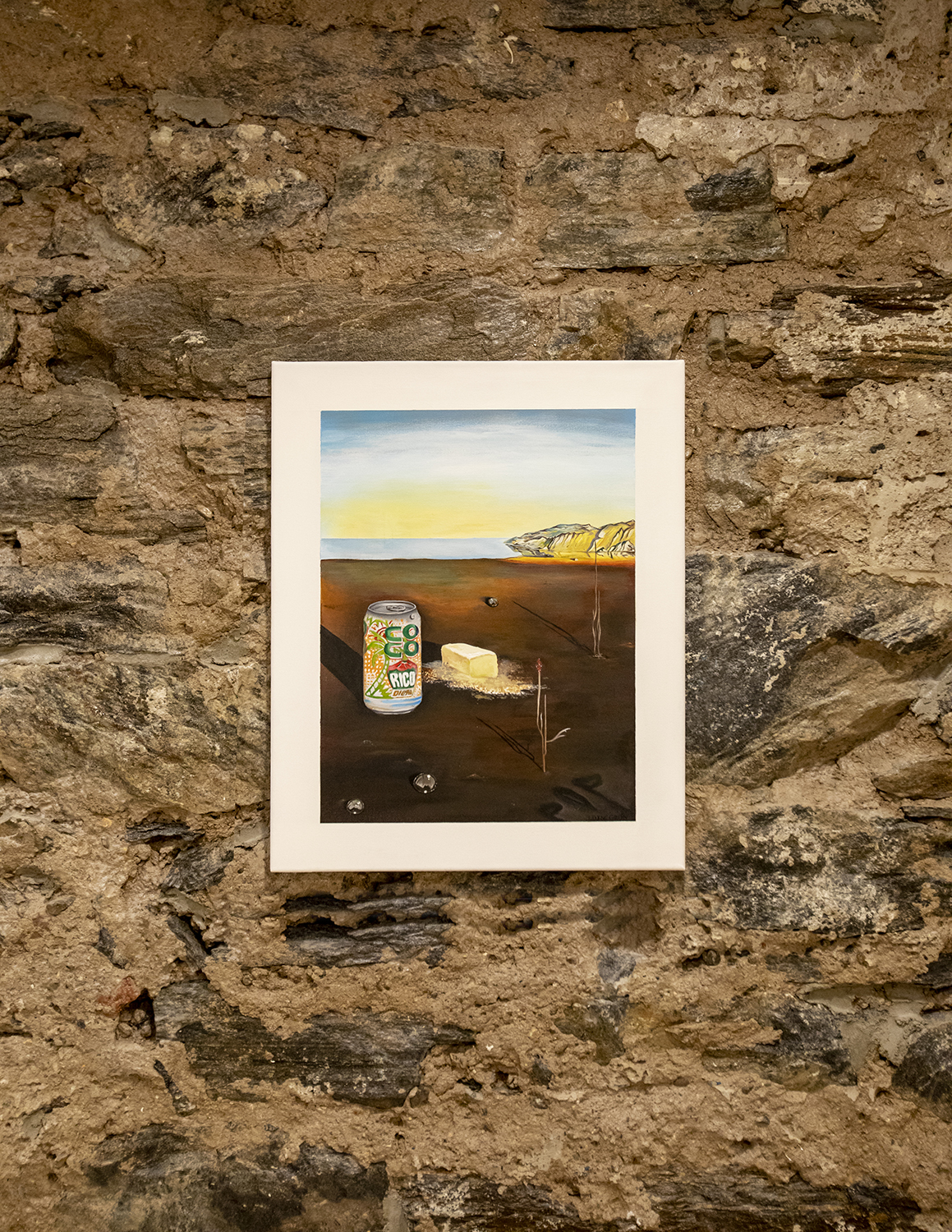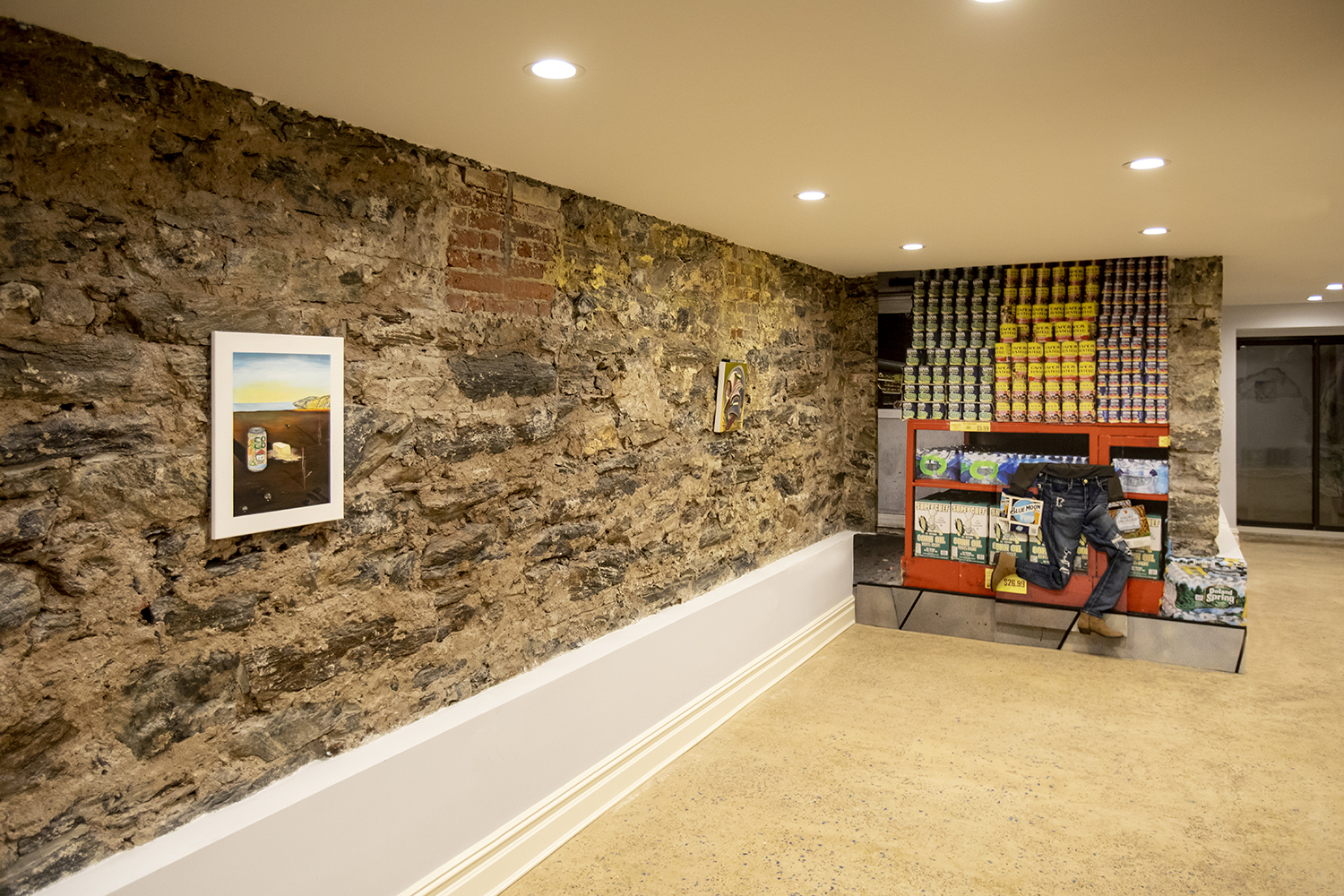YB²P
Amy Bravo, Aya Brown, Danielle De Jesus, Larissa De Jesus Negrón, José Delgado Zuñiga, Khari Johnson-Ricks, Estelle Maisonett, Ludovic Nkoth, John Rivas, Quiara Torres, Raelis Vasquez

Aya Brown, BB STAPPING, 2020, Installation in YB²P at CTG Harlem, NY

Khari Johnson Ricks, A morning run, 2020, Installation in YB²P at CTG Harlem, NY

Ludovic Nkoth, For a Moment, 2020, Installation in YB²P at CTG Harlem, NY

Danielle De Jesus and Raelis Vasquez, Installation in YB²P at CTG Harlem, NY

Raelis Vasquez, Del Otro Lado de Dajabon, 2020, Installation in YB²P at CTG Harlem, NY

Raelis Vasquez, Hermanito, 2020, Installation in YB²P at CTG Harlem, NY

Amy Bravo, Untitled, 2020, Installation in YB²P at CTG Harlem, NY

Quiara Torres, Mona Visa, 2019 & Estrella Morena, 2019, Installation in YB²P at CTG Harlem, NY

John Rivas, La Lolin, 2020 and Larissa De Jesus Negron, Elmhurst, 2019, Installation in YB²P at CTG Harlem, NY

Installation in YB²P at CTG Harlem, NY

Larissa De Jesus Negron, The Persistence of labor, 2019, Installation in YB²P at CTG Harlem, NY

Installation in YB²P at CTG Harlem, NY
Essay by Angelik Vizcarrondo-Laboy
YB²P is an exhibition of paintings by eleven Black and Brown artists under thirty-five based in New York, New Jersey, and Connecticut. Of Black, Caribbean, Indigenous, and Latinx heritage, these young artists are expanding upon the well-established tradition of figurative abstraction in painting championed by recognized artists of color such as Jean-Michele Basquiat, Frida Kahlo, Barkley Hendriks, Kerry James Marshall, Mickalene Thomas, and Kehinde Wiley, to name a few. This presentation demonstrates a wide range of artistic experimentation with this style by a new generation of artists, including but not limited to the incorporation of mixed media and collage to being unbound from the white canvas. Like their predecessors, these artists intentionally portray Black and Brown bodies and experiences to honor their communities and ensure their presence in art for years to come. Their practices also serve as a form of resistance and resilience. Figurative painting is prevalent with many artists of color in part as a direct reaction to the exclusionary canon of art, which historically has glorified the white body and deliberately dismissed Black and Brown cultures through the rejection of color in Modernism. Rarely the subject of art except for paintings with a colonial or imperialist perspective, such as Castas or Paul Gaugin’s oeuvre, twentieth-century artists of color took it upon themselves to take control of their visual representation and narratives, forever altering the history of art.
Raelis Vasquez (Dominican Republic, b. 1995) takes representation head-on in his detailed portraits. Capturing real people in vulnerable, honest, and tender moments Vasquez aims to make art that more closely mirrors his own experiences growing up in the Dominican Republic, especially since he felt misrepresented in the art he saw growing up. Now living in New York, he also seeks to comment on the complicated relationship between the Dominican Republic and the United States. Aya Brown’s (United States, b. 1995) saturated paintings on the surface of brown paper, a material purposefully chosen to reject whiteness as a standard, bring visibility to the Black lesbian womxn community of New York, of which she is a part of. Her confident figures, outfitted in Yankees fitted caps, Timberland boots, baggy pants, crop tops, and strapons, are unapologetic odes to pleasure, sex, love, and living one’s truth. Adapting a “Western-style” of painting to depict people of color Danielle De Jesus (United States, b. 1988) elucidates the complexities of Black and Brown identities, mainly to shed light on the disruptive trauma of immigrating to the US. Her practice is also a platform to document her experience as a Puerto Rican Afro-Latinx.
An immigrant himself, Ludovic Nkoth (Cameroon, b. 1994), began to thoughtfully consider his identity through art when he arrived in the US as a teenager from his homeland of Cameroon — seen as African in the US and as American in Cameroon, his identity is in constant flux. Through expressive brushstrokes that vibrate with the energy of bold color, Nkoth incorporates the African masks, patterns, and symbols of his childhood into his quotidian renderings of the Black community in New York, ultimately coalescing the different aspects of his identity. His practice is also a poignant reflection of American identity within the contentious debates surrounding immigration, race, and patriotism. Amy Bravo (United States, b. 1997) also navigates a sense of displacement in her work due to the lack of a given or chosen family or a trusted guide into Cuban culture. Her characters are imaginary friends that take the place of missing family and friends to provide comfort in navigating her identity as Cuban and queer. Through her work, which includes imagery of queer and Cuban night clubs and pastoral scenes, she questions romanticized ideas of the island as she seeks to reconnect to her roots as a member of the diaspora. Self-taught Quiara Torres (United States, b. 1995) also considers her relationship to the diaspora through a practice that is inspired by the Native rituals of her Dominican Taino ancestry. She recontextualizes the by-product waste of colonial imports by transforming burlap coffee and grain sacks into sacred objects, the utilitarian cloth becoming her canvas. Intuitively guided by ancestral forces, Torres brings to life icons of Dominican goddesses and other tributes to the divine feminine.
Within José Delgado Zuñiga’s (United States, b. 1988) large-scale surrealist riots of melding color are figures, symbols, and icons that comment on politics, particularly anti-migratory policies, psychology, and spirituality. He also conveys cultural dualism as a Mexican American. The son of Salvadorian immigrant parents, John Rivas (United States, b. 1997), began his practice of mixed media paintings and collages close to home through abstract and layered reinterpretations of family photographs that honored his culture. His compositions critically engage the history of colonization and assimilation of Latinx people throughout the Americas and the immigration issues at the US-Mexico border. Constructed in a patchwork of skin tones that combine paint with other materials, such as magazine pictures, beans, coffee, corn, and a plethora of found objects, Brown people are featured prominently in Rivas’s work. It is an argument for the complexity of people in the Latinx community that is often lost within the prescribed stereotypes perpetuated by American media. Estelle Maisonett (United States, b. 1991), who is Mexican and Puerto Rican, also works in mixed media painting and collage. Based on her experiences living in New York, especially the Bronx, she builds figures on life-size collages by sourcing clothing and other found objects. These are explorations on how materiality can shape identity. With no actual bodies to speak off, only an illusion of them and the environment they inhabit these anonymous beings become defined through the preconceived material notions of race, culture, sexual orientation, and gender of the viewer.
While Larissa De Jesus Negrón (Puerto Rico, b. 1994) has removed the figure from most of her recent pieces, the body remains an essential element of the composition. In this body of work, she visualizes quiet and intimate spaces for the contemplation of one’s existence. She invites the viewers to get lost in reflection and appreciate life’s simplicity as they experience the mundane objects and views of the richly textured and colorful meditative spaces she creates. Khari Johnson Ricks’s (United States, b. 1994) explores the physicality of the body in a multidisciplinary practice that goes beyond the wall onto performances that mirror the dynamism of his bold cut-paper vignettes of Black bodies in motion. Through painting, zine-making, DJing, and performing, he investigates how vernacular ritual practices, such as dancing, sports, and psychical training, can become traditions and how the body can carry history through movement. He revitalizes and combines the Shotokan Karate, Jersey Club, Weightlifting, and other sports to highlight the importance of movement as a tool of community building and as a form of non-verbal communication. He also advocates for the joy and healing that movement can bring to disenfranchised and marginalized people.
Together, the YB²P artists reveal an exciting and multifaceted picture of the future of figurative painting, one that is conscious of the complexities and struggles, but also the happiness and pride that comes from being a person of color. Ultimately, this young cohort is not only carrying forth this legacy but redefining what it means to be American in today’s political climate.